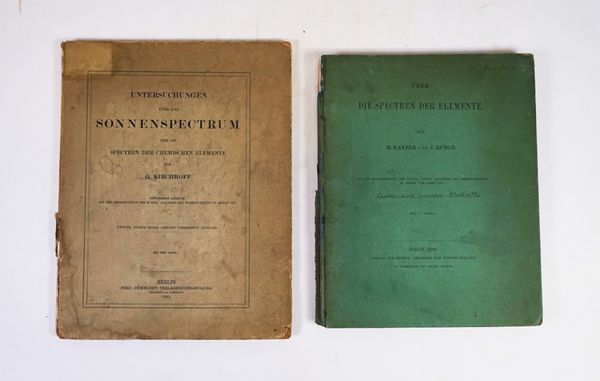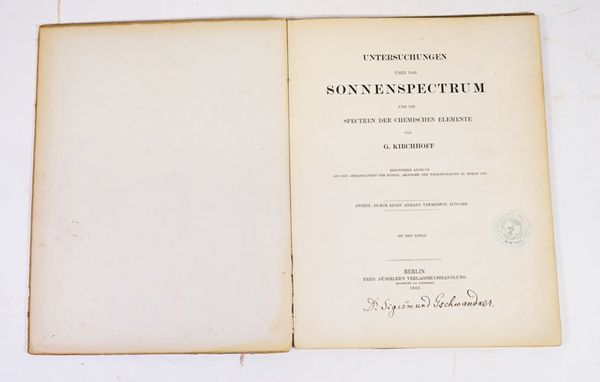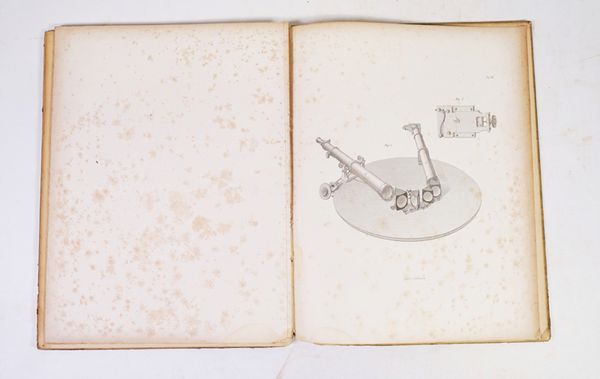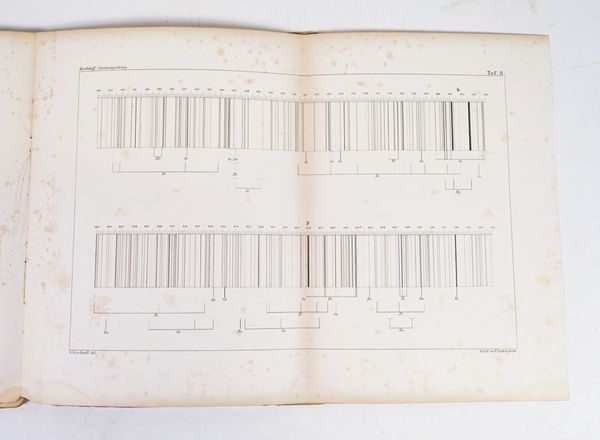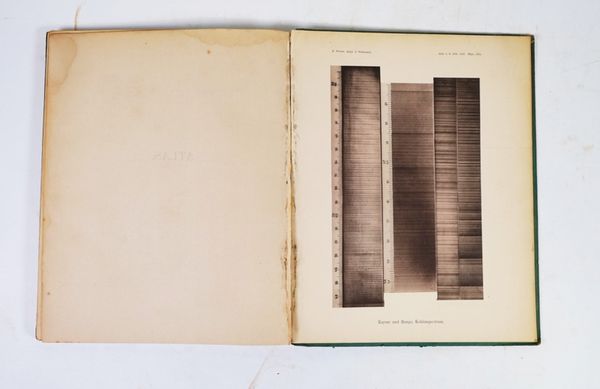KIRCHHOFF, Gustav Robert (1824-87). Untersuchungen über das Sonnenspectrum und die Spectren der Chemischen Elemente.
| Estimate: | £200 - £300 |
| Hammer price: | £100 |
KIRCHHOFF, Gustav Robert (1824-87). Untersuchungen über das Sonnenspectrum und die Spectren der Chemischen Elemente … Besonderer Abdruck aus den Abhandlungen der Königl. Akademie der Wissenschaften zu Berlin 1861. Zweite, durch einen Anhang Vermehrte Ausgabe. Berlin: Ferd. Dümmler’s Verlagsbuchhandlung (Harrwitz und Gossman), 1862. First part (expanded) only (of 2). 4to (305 x 236mm). 2 folding lithographed plates of spectrums and one engraved (plates spotted and stained). Original printed paper boards (lacks backstrip, extremities rubbed, stained). Provenance: Dr. Sigismund [?]Eschwandner (old signature at foot of title); from the Collection of Peter and Margarethe Braune. “A series of delicate experiments by Kirchhoff (‘Investigation of the Solar Spectrum’), partly in conjunction with Bunsen … created the new science of spectroscopy. Sodium was the substance most frequently used in experiments with the spectrum, due to its volatility. Kirchhoff found that by exposing in the flame of a Bunsen burner a platinum wire dipped in salt he obtained in the spectrum the characteristic bright yellow lines of sodium superimposed on the spectrum of platinum. By repeating the process and introducing vaporized sodium between the incandescent wire and the screen, the yellow lines were replaced by dark lines. With great ingenuity he repeated the experiment with sunlight and got the same result. The fact that the dark lines were produced when a beam of light from an incandescent element passed through the same substance at a lower temperature suggested that this was due to absorption. In the solar spectrum, for example, the dark lines were caused by absorption in the gases of the sun’s atmosphere. Further experiments showed that every glowing vapour produced a spectrum peculiar to itself and thereby made chemical analysis possible on a scale and with a degree of accuracy previously unknown. More than this, it brought, so to speak, the stellar universe into the laboratory and showed that the basic materials of the universe are everywhere the same” (PMM). Horblit 59; Norman 1219; PMM 278(b); Sparrow 117. With H. Kayser & C. Runge’s Über die Spectren der Elemente (Berlin, 1888-89, 2 parts [only] in one vol., 9 plates of spectrums, original boards). (2)
